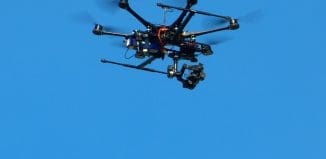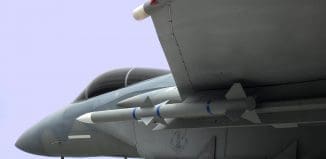Raytheon’s Virtual Environment Increases Factory Workers Productivity
This post is also available in:  עברית (Hebrew)
עברית (Hebrew)
Raytheon Missile Systems engineers have developed the CAVE, a room-sized, interactive 3-D theater, or generically a ‘computer assisted virtual environment’. Using the platform, teams of Raytheon workers can collaborate on design and development using three-dimensional, stereoscopic “immersive visualization.”
Kendall Loomis, manager of Raytheon Immersive Design Center told tucson.com:” With computer-aided design plans loaded into CAVE, participants can navigate through a product like a missile, or “walk” through a virtual factory floor”.
The CAVE also can be connected to similar systems for cross-country virtual collaboration. Raytheon’s CAVE systems are made and custom-installed by Iowa-based Mechdyne Corp., which installed the latest system at Raytheon’s Tucson operation last October to replace a smaller system set up in 2010.
The design was digitized and fed into the CAVE system in Tucson, and a portable CAVE system was shipped to Raytheon’s supplier in New Hampshire so engineers could collaborate virtually on issues such as pinch points and heat hazards.
Raytheon’s CAVE has also become a go-to tool for facility design. When Raytheon was designing its $75 million missile assembly plant in Alabama, the CAVE in Tucson allowed a team of engineers, factory staff, program leaders, safety officials and contractors to collaborate on the layout of the highly automated plant, where shuttles autonomously convey missiles from one workstation to the next.
In the virtual world, the team found hundreds of issues, from space and clearance issues to missing exit signs and doors too short for taller workers. In all, the team fixed 49 issues, saving an estimated $1.5 million in construction costs.
Other defense firms also use VR setups for training. The Air Force has used flight simulators for decades, and today all the armed services are exploring or using some form of VR training.
“It saves a lot of money, like all simulation-based training does — it’s a real cost saver for the military across the board,” said John Williams, a spokesman for the National Defense Industrial Association and the affiliated National Training and Simulation Association.
“It’s sort of going to be new frontier, you’ll see the interfaces become less clunky with miniaturization, and they’ll seem more seamless,” Williams said.
Looking ahead, Loomis said Raytheon is exploring ways to use the CAVE for employee training, for example, immersing quality-control employees or applicants in a virtual factory set up with numerous visible safety problems and asking them to spot them.
Raytheon also is working to pull more data analytics into the mix, including structural, thermal, mechanical and electric data, for sophisticated modeling, she said.
“That large-scale data analytics will blow the roof off what we do here — that is very cutting-edge and very unprecedented in this environment, to take multiple, different software apps and interlace them together in one place over a visual.”




























